Describe the Use of Sql in Relation to Rolap
When youre using an ODBC database such as eg. Query performance in this model is slow when compared with MOLAP.

Difference Between Rolap And Molap Geeksforgeeks
If your queries are static and simple then dont use ROLAP.

. ROLAP Relational Online Analytical Processing The ROLAP storage mode causes the aggregations of the partition to be stored in indexed views in the relational database that was specified in the partitions data source. In a three-tiered architecture the user submits a request for multidimensional analysis and the ROLAP engine converts the request to SQL for submission to the database. Cubes are a multidimensional structure similar to the star schema in an RDBMS but where the management of the storage is highly optimized to deal with such a structure.
Describe the use of SQL in relation to ROLAP. Like MOLAP HOLAP causes the aggregation of the division to be stored in a multidimensional operation in an SQL Server analysis services instance. Difficulty in finding a balance in storage and performance while designing the HOLAP system.
Basically they use an OLAP cube. The data in ROLAP is fetched from a data warehouse. ROLAP uses SQL as its functioning language to fetch the data and work on it whereas the MOLAP uses the Sparse matrix technique to get the data from multi-dimensional array in the form of dimensional data cubes.
ROLAP Data are stored in relational model tables Special schema called Star Schema One relation is the fact table all the others are dimension tables 12 Facts Week Product Product Year Region Time Channel Revenue Expenses Units Model Type Color Channel Region Nation District Dealer Time Large table Small tables. A static multidimensional view of the data is created in ROLAP. In ROLAP Data is fetched from data-warehouse.
Advantages of ROLAP include. Unlike the MOLAP storage mode ROLAP does not cause a copy of the source data to be stored in the Analysis Services data folders. The engine converts the resulting data from SQL to a multidimensional format before it is returned to the client for viewing.
The SQL queries Where is equivalent to Slicing and Dicing operations in ROLAP. The SQL standard provides two additional aggregate operators. With data cube that it provides all possible combinations than the argument attributes of the clause.
Considered to be more scalable in handling large data volumes. We can use either DESCRIBE or DESC both are Case Insensitive. While in MOLAP Data is fetched from MDDBs database.
Maintenance is complex as the updates can be expected quite often. ROLAP employs optimization techniques for backend database it uses aggregation techniques and it is more scalable than MOLAP. ROLAP provides data directly from data warehouse.
Suppose our table whose name is one has 3 columns. Since in database we have tables thats why we use DESCRIBE or DESC both are same command to describe the structure of a table. In essence each action of slicing and dicing is equivalent to adding a WHERE clause in the SQL statement.
While in MOLAP Sparse matrix is used. MOLAP uses array-based multidimensional storage engines to display multidimensional views of data. __ extends SQL so that it can differentiate between access requirements for data warehouse data and operational data.
Higher processing ability when related to ROLAP and MOLAP systems. ROLAP tools access the data in a relational database and generate SQL queries to calculate information. If the relation database you are connecting to is not listed set the type to General.
A fact table is related to each dimension table in a relationship. As the name suggests DESCRIBE is used to describe something. The HOLAP storage mode connects attributes of both MOLAP and ROLAP.
Then the operation is performed in reverse. ROLAP servers use complex SQL queries for multi-dimensional analysis. OLAP is a tool for simplifying complex data analysis.
It depends on how youre going to use it. This methodology relies on manipulating the data stored in the relational database to give the appearance of traditional OLAPs slicing and dicing functionality. Data is stored in a standard relational database and can be accessed by any SQL reporting tool.
With roll up that it provides the aggregates obtained by considering the. It would add unnecessary overhead. The two operators are.
ROLAP does not because a copy of the source information to be stored in the Analysis services data folders. These use the polymorphic value ALL to denote the set of all values that an attribute can take. On the other hand if you need to do complex and detailed interactive data analysis for reporting and business intelligence then by all means use ROLAP.
ROLAP and MOLAP vendors are working toward the integration of their respective solutions within a unified decision support framework. Query performance is also improved because the query optimizer is modified to identify the SQL codes intended query targets. The traditional OLAP model this is stored in multidimentional cubes.
It is used for large volumes of data. SQL DESCRIBE Statement. While in MOLAP Data is stored in multidimensional array.
ROLAP tools use SQL for all calculation of aggregate data. To answer this criticism ROLAP extends SQL so that it can differentiate between access requirements for data warehouse data based on the star schema and operational data normalized tables. In ROLAP Data is stored in relation tables.
For example if the query target is the data warehouse the optimizer passes the requests to the data warehouse. ROLAP vendors have mitigated this risk by building into the tool out-of-the-box complex. A ROLAP system therefore can generate the SQL code required to access the star schema data.
Because ROLAP technology mainly relies on generating SQL statements to query the relational database and SQL statements do not fit all needs for example it is difficult to perform complex calculations using SQL ROLAP technologies are therefore traditionally limited by what SQL can do. While flexibility is the new feature of ROLAP there exist products that needed the use of denormalized database design. Volume to occupy huge data as it has a relational database inside HOLAP.
This contains creating multiple SQL statements to manage user requests and also being capable of making the SQL statements depending on the optimizer of the DBMS engine. Set of waiting seconds. It stores data in the form of relation tables.
ROLAP simplifies the report and analysis development by 100 times when compared to MOLAP. Faster loading than the automated MOLAP loads. However there are no set limits to the for handling computations.
In ROLAP Static multidimensional view of data is created. Advantages of ROLAP Cube. Essentially with ROLAP the data is stored in a relational database whereby with MOLAP ie.
It stands for Relational Online Analytical Processing. Most decision support data requests require the use of multiple-pass SQL queries or multiple nested SQL statements. The ROLAP approach can leverage database authorization controls such as row-level security whereby the query results are filtered depending on preset criteria applied for example to a given user or group of users SQL WHERE clause.
It uses complex SQL queries. Microsoft SQL Server there may be delays because of network traffic or heavy use of the ODBC server. The access time in ROLAP is slow.
In ROLAP Complicated sql queries are used.

Log Shipping Configuration With Sql Server 2012 Sql Server Sql Server

Molap Rolap And Holap Data Warehousing Data Warehousing

Difference Between Rolap And Molap Geeksforgeeks

What Is Dimensional Model In Data Warehouse Big Data Path Data Warehouse Data Data Structures

Azure Sql Data Warehouse Microsoft S Cloud Based Scale Out Database Is Now Generally Available Winbuzzer Data Warehouse Sql Data

Etl Developer Job Description And Its Requirements Job Description Business Data Job
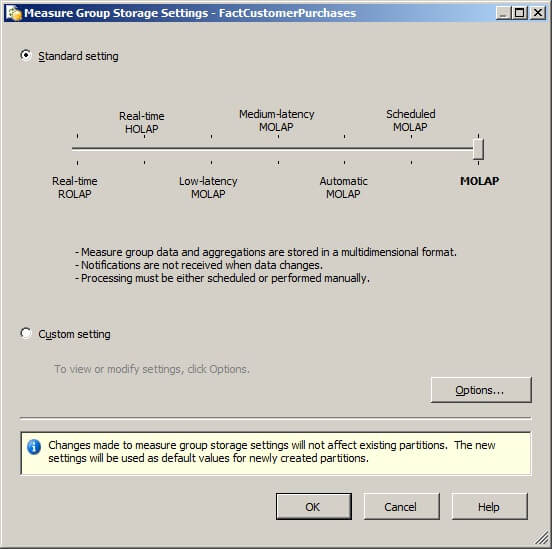
Ssas Query Response Comparison By Storage Mode

Sql Server Analysis Services Query Response Comparison By Storage Mode Sql Sql Server Analysis

Pin By Mujo Colovic On Analysis Cube Sql Cube Store

Olap Types Rolap Molap Holap Tech Hunger

The Parallel Rolap Server Architecture Download Scientific Diagram
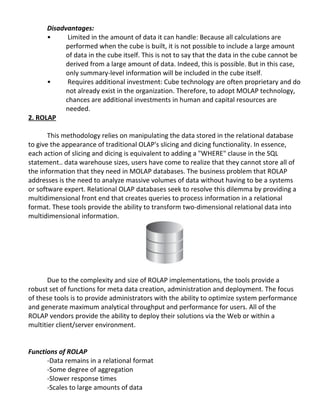
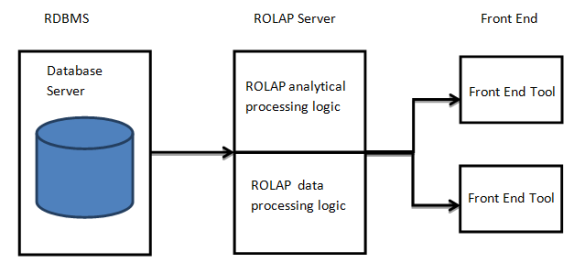


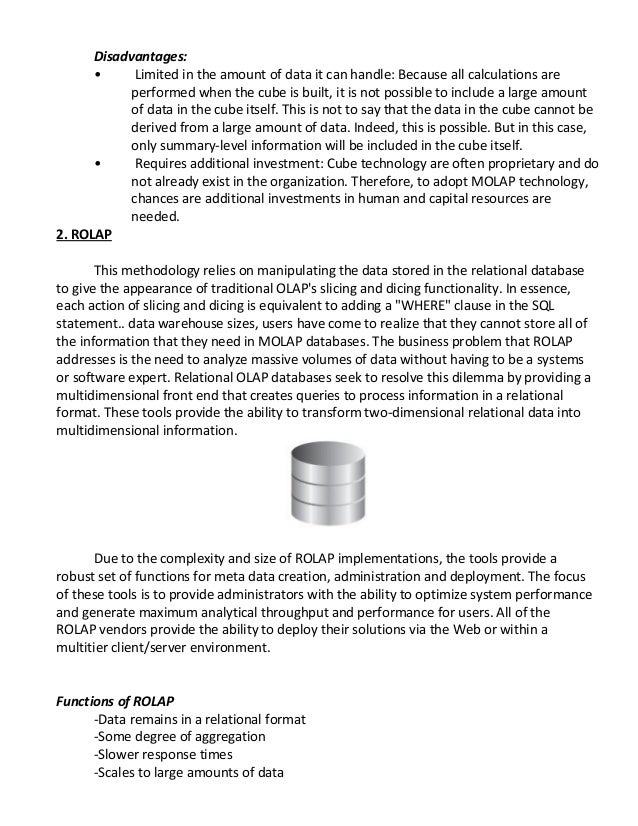
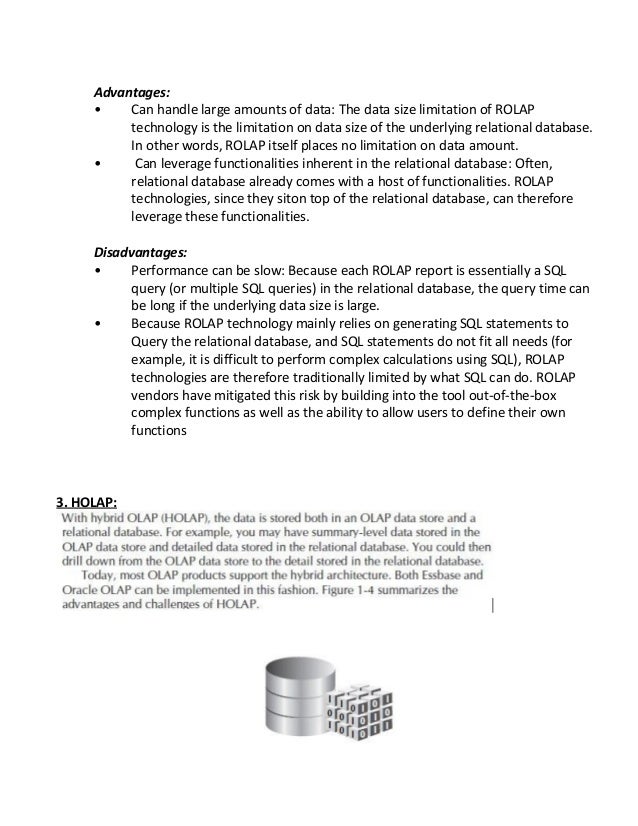


Comments
Post a Comment